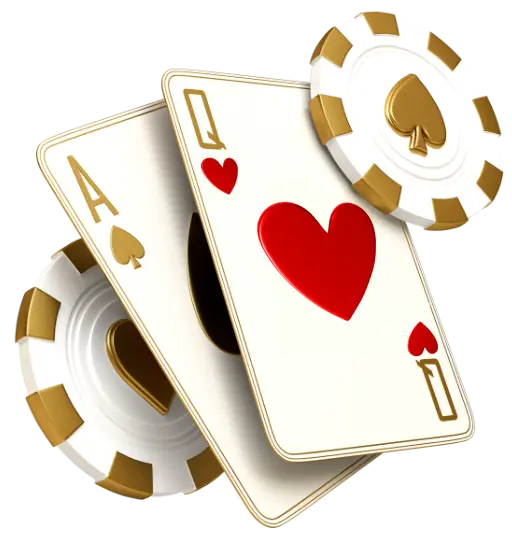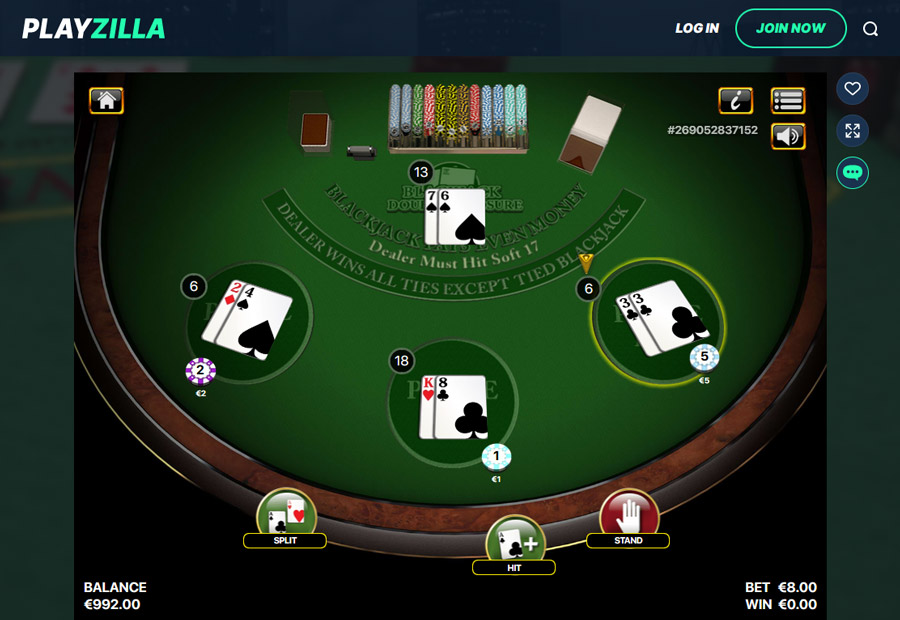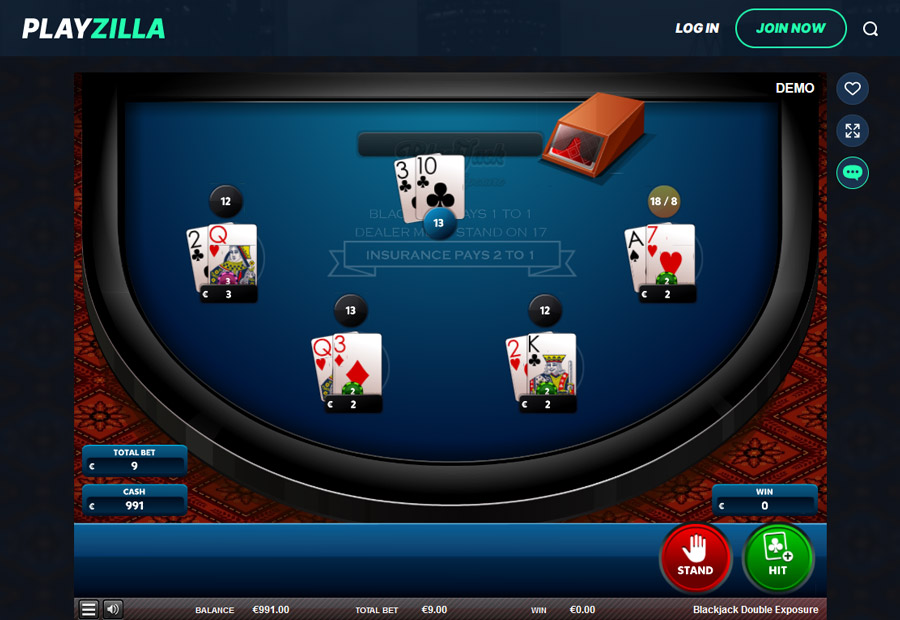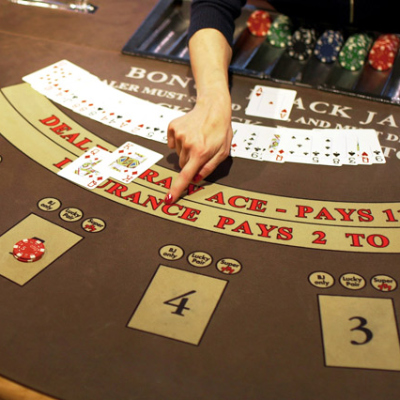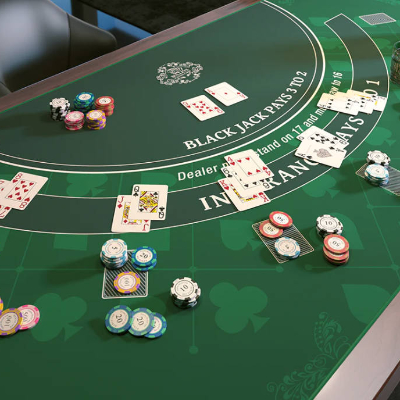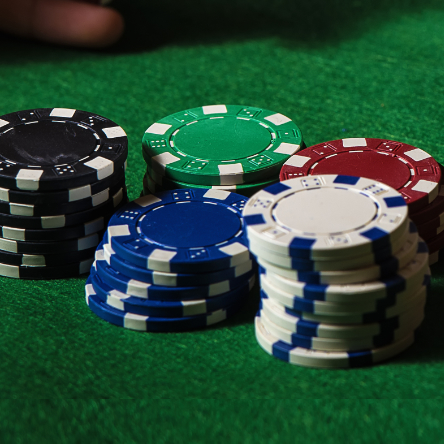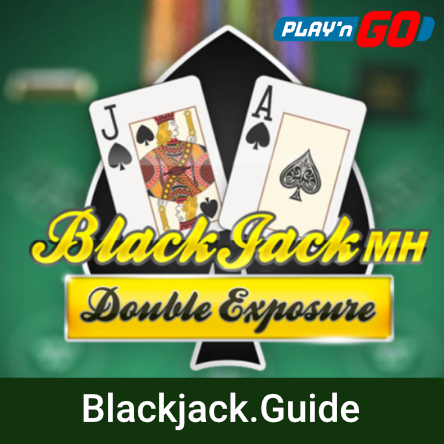

The main draw is revealed in the game's name: two face up cards dealt to the dealer, as opposed to one. Hence the double exposure. That means no hole card, and you know exactly what the dealer has from the get go.
This would make a win easier, you'd think. But here's the twist. Some of the rules have been slightly altered to even the playing field back out. That being said, overall, it's a simple and relatively good odds game. Plus, with almost no learning curve, it's a new blackjack version you can get started with quickly after reading our review, complete with tips and tricks.


But the real explosion you might say began with the advent of online casino play, which has helped make this version of the classic table game particularly popular.
Table of Contents
Best Casinos to play Double Exposure Blackjack 2025
  | 92/100 Read Review | $10,000+ 500 Free Spins | visit Lucky Dreams | |
  | 91/100 Read Review | $1,500 + 500 Free Spins | visit Playzilla | |
  | 90/100 Read Review | €2,250/C$4,500+ 200 Free Spins | visit Dragonslots | |
  | 89/100 Read Review | $1,250+ 125 Free Spins | visit Bizzo | |
  | 89/100 Read Review | $3,000+ 200 Free Spins | visit Platincasino | |
  | 89/100 Read Review | $100+ 100 Free Spins | visit National Casino | |
  | 88/100 Read Review | $1,500+ 400 Free Spins | visit Spinoli | |
  | 88/100 Read Review | $120+ 120 Free Spins | visit 20Bet | |
  | 88/100 Read Review | $2,500 | visit Betandplay | |
Double Exposure Blackjack Basics
While there are some unique twists in this game, it most certainly does not reinvent the wheel.
The main goal of the game remains the same as in other blackjack variants. That being to beat the dealer with either a 21, or as high a score as possible without going over.
Players take a seat around the table, and place their bets. The betting limit varies depending on the casino and is usually communicated transparently. For online games, you can easily see this in the game rules, or by toggling the plus and minus buttons manually.
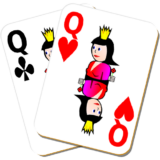

This offers a huge advantage in terms of your next move, as there are no surprises from the dealer's end. So you can make a more educated decision as to whether you'd like to hit, stand, split, or double down.
If you split on aces, you'll only get one more card per hand. Also, you cannot buy insurance, or surrender.
If there is a draw, i.e. you tie the dealer's hand, you lose, unless you have a natural blackjack in which case it's a push; nothing lost, nothing won.
And a natural blackjack here is paid out at a mere 1:1.
Rules and special features:
- 6 decks of 52 cards each are used in the game.
- The dealer receives both their cards face up.
- No insurance option.
- If there is a tie, the house wins; unless both have blackjack, then the player gets their stake back.
- Blackjack pays even money (1:1).
- Up to 16 points, the dealer must hit.
- At 17 points and above, the dealer must stand.
- Splitting is possible for all cards.
- If two aces are split, one more card is allowed per hand.
- Doubling down is allowed.
Most importantly is the fact that if there is a tie, the house wins. A natural blackjack is the only exception here. If the dealer and the player each have an ace and a 10-value card as their initial two cards, the player gets their stake back.
These are the basics. However, many casinos or game providers may tweak the rules. For example, the dealer might or might not stand on a soft 17, doubling down might or might nor be allowed after a split. So you want to check each exact version's rules when playing Double Exposure Blackjack.
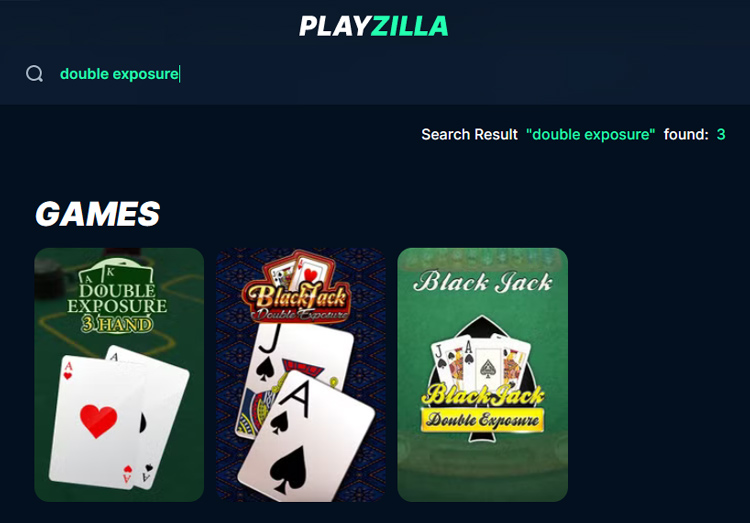

Play Double Exposure Blackjack for Free
The greatest benefits of online gambling are the convenience, privacy, variety, bonuses, and free play. And fortunately this free play possibility has been extended to Double Exposure Blackjack.
There are many providers that have programmed the game to allow for demo mode enjoyment. And many online casinos facilitate this as well. But best of all, you can play Double Exposure Blackjack right here, right now, for free. It's from one of the best online casino game providers, Play'n GO, which is super exciting. No registration or deposit required.
While there's very little learning curve involved, a few hands of free play will give you a feel for the slight differences between classic blackjack and this spin on the game. This way you can fine tune your betting, and practice how you want to play your cards once you move on to real money mode and the big leagues of true online gambling.
Double Exposure Blackjack - Play in Demo Mode
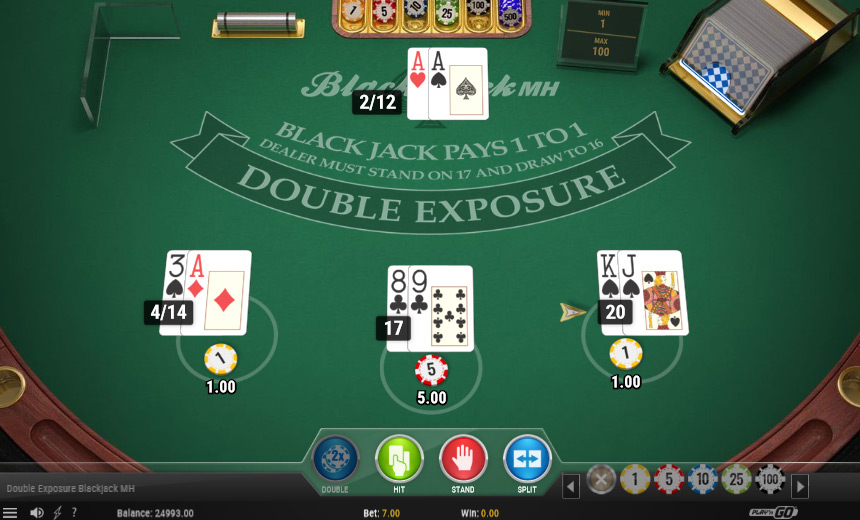

How Is Double Exposure Blackjack Different from Other Variants?
The key way in which Double Exposure differs from other blackjack variants is how both dealer cards are revealed from the get-go. This, obviously, makes it correspondingly easier for players at the table to make an informed decision on how to proceed.
With this transparency reducing some of the uncertainty, they can better determine if it makes sense to hit, stand, or, depending on their own hand, perhaps even dare to double down on their bet. Keep in mind, however, even with this added information, there are no guarantees. It's still a card game after all, with loads of luck wrapped in. So you can be better informed about how things will unfold, but definitely not certain.
Another big difference is in terms of payouts. Instead of a 3:2 ratio in a traditional game, here blackjack pays even money at 1:1.
There is also no insurance option in Double Exposure like you'd find in many other classic blackjack games. And if you have a tie, you lose. There's no such thing as a push in Double Exposure, with the exception of a natural blackjack against the dealer's.
Double Exposure Blackjack Strategy
Using basic strategy, you can get the most out of your Double Exposure Blackjack play. The trick in making this happen is to choose the right moves, adapted to this unique game's format.
Some of the strategic recommendations you'll generally find quoted include:
- Hit on a hand of 11 or less.
- Keep hitting when the dealer has 20.
- Double down when you have an 11 or lower to a dealer's hand of 14 to 16.
- Stand on a hand of 17 to 20, unless the dealer's hand has the exact same value, or higher.
- Do not split a hand with a 10-value, unless the dealer's hand is a hard 13 to 16.
- Always split aces, with the exception of an 11, 17, or higher dealer hand.
Those are some of the basics in terms of how to view your cards. To help you figure out how to play through certain types of hands, we've put together some cheat sheets to help you plot your next move.
| Dealer hand | ||||||||||||||||||
|---|---|---|---|---|---|---|---|---|---|---|---|---|---|---|---|---|---|---|
| Player hand | 4 | 5 | 6 | 7 | 8 | 9 | 10 | 11 | 12 | 13 | 14 | 15 | 16 | 17 | 18 | 19 | 20 | |
| 5 | H | H | H | H | H | H | H | H | H | H | DH | DH | DH | H | H | H | H | |
| 6 | H | H | H | H | H | H | H | H | H | H | DH | DH | DH | H | H | H | H | |
| 7 | H | H | H | H | H | H | H | H | H | H | DH | DH | DH | H | H | H | H | |
| 8 | H | H | H | H | H | H | H | H | DH | DH | DH | DH | DH | H | H | H | H | |
| 9 | H | DH | DH | H | H | H | H | H | DH | DH | DH | DH | DH | H | H | H | H | |
| 10 | D | D | D | D | D | D | H | H | D | D | D | D | D | H | H | H | H | |
| 11 | D | D | D | D | D | D | H | H | D | D | D | D | D | H | H | H | H | |
| 12 | S | S | S | H | H | H | H | H | S | S | S | S | S | H | H | H | H | |
| 13 | S | S | S | H | H | H | H | H | S | S | S | S | S | H | H | H | H | |
| 14 | S | S | S | H | H | H | H | S | S | S | S | S | S | H | H | H | H | |
| 15 | S | S | S | H | H | H | S | S | S | S | S | S | S | H | H | H | H | |
| 16 | S | S | S | H | S | S | S | S | S | S | S | S | S | H | H | H | H | |
| 17 | S | S | S | S | S | S | S | S | S | S | S | S | S | H | H | H | H | |
| 18 | S | S | S | S | S | S | S | S | S | S | S | S | S | S | H | H | H | |
| 19 | S | S | S | S | S | S | S | S | S | S | S | S | S | S | S | H | H | |
| 20 | S | S | S | S | S | S | S | S | S | S | S | S | S | S | S | S | H | |
Legend: H = Hit, S = Stand, D = Double down, DH = Double down if possible, otherwise hit
Another special feature is that the player plays differently against soft hands than hard hands. This applies at least if the dealer has a collective card value between 12 and 16, as over 16 points the dealer has to stand anyway.
Therefore in such scenarios hands are played exactly as against hard hands. And even if the point-value is lower than 12, you would play as you would against hard hands; although to save space, we haven't included all numbers in the following table.
| Dealer hand | ||||||
|---|---|---|---|---|---|---|
| Player hand | 12 | 13 | 14 | 15 | 16 | |
| 5 | H | H | H | H | H | |
| 6 | H | H | H | H | H | |
| 7 | H | H | H | H | H | |
| 8 | H | H | H | H | H | |
| 9 | H | H | H | H | H | |
| 10 | H | H | DH | DH | DH | |
| 11 | H | DH | DH | DH | DH | |
| 12 | H | H | H | H | S | |
| 13 | H | H | S | S | S | |
| 14 | H | S | S | S | S | |
Legend: H = Hit, S = Stand, DH = Double down if possible, otherwise hit
The following moves apply to soft hands as well as pairs against hard hands of the dealer.
| Dealer hard hand | ||||||||||||||||||
|---|---|---|---|---|---|---|---|---|---|---|---|---|---|---|---|---|---|---|
| Player hand | 4 | 5 | 6 | 7 | 8 | 9 | 10 | 11 | 12 | 13 | 14 | 15 | 16 | 17 | 18 | 19 | 20 | |
| A,2 | H | H | H | H | H | H | H | H | DH | DH | DH | DH | DH | H | H | H | H | |
| A,3 | H | H | H | H | H | H | H | H | DH | DH | DH | DH | DH | H | H | H | H | |
| A,4 | H | H | DH | H | H | H | H | H | DH | DH | DH | DH | DH | H | H | H | H | |
| A,5 | H | DH | DH | H | H | H | H | H | DH | DH | DH | DH | DH | H | H | H | H | |
| A,6 | H | DH | DH | H | H | H | H | H | DH | DH | DH | DH | DH | H | H | H | H | |
| A,7 | DS | DS | DS | S | H | H | H | H | DS | DH | DH | DH | DH | S | H | H | H | |
| A,8 | S | S | S | S | S | S | S | S | DS | DS | DS | DS | DS | S | S | H | H | |
| A,9 | S | S | S | S | S | S | S | S | S | DS | DS | DS | DS | S | S | S | H | |
| A,10 | S | S | S | S | S | S | S | S | S | S | S | S / DS | S / DS | S | S | S | S | |
| 2,2 | Sp / H | Sp / H | Sp | H | H | H | H | H | Sp | Sp | Sp | Sp | Sp | Sp | H | H | H | |
| 3,3 | Sp / H | Sp / H | Sp | H | H | H | H | H | Sp | Sp | Sp | Sp | Sp | Sp | H | H | H | |
| 4,4 | H | H | H | H | H | H | H | H | Sp | Sp | Sp | Sp | Sp | H | H | H | H | |
| 5,5 | DH | DH | DH | DH | DH | H | H | H | DH | DH | DH | DH | Sp / D | H | H | H | H | |
| 6,6 | Sp | Sp | Sp | H | H | H | H | H | Sp | Sp | Sp | Sp | Sp | Sp | H | H | H | |
| 7,7 | Sp / S | Sp | Sp | H | H | H | H | S | Sp | Sp | Sp | Sp | Sp | Sp | H | H | H | |
| 8,8 | Sp | Sp | Sp | Sp | Sp | S | S | S | Sp | Sp | Sp | Sp | Sp | Sp | H | H | H | |
| 9,9 | Sp | Sp | Sp | S | Sp | S | S | S | Sp | Sp | Sp | Sp | Sp | S | Sp | H | H | |
| 10,10 | S | S | S | S | S | S | S | S | S | Sp | Sp | Sp | Sp | S | S | S | H | |
| A,A | Sp | Sp | Sp | Sp | Sp | Sp | Sp | H | Sp | Sp | Sp | Sp | Sp | H | H | H | H | |
Legend: H = Hit, S = Stand, Sp = Split, DH = Double down if possible, otherwise hit, DS = Double down if possible, otherwise stand; S / DS = When a blackjack is dealt: Stand on the first two cards if you have a soft 21 after a split (does not count as blackjack) and if it is allowed, then double down, otherwise stand; Sp / H = Split if doubling down is allowed after a split, otherwise draw; Sp / S = Split if allowed, then double down, otherwise stand; Sp / D = Split if allowed to double down afterwards, otherwise double down straight away
This next chart highlights moves to apply with soft hands and pairs against dealer soft hands. All combinations not mentioned here are played the same as they would be against hard hands.
| Dealer soft hand | ||||||
|---|---|---|---|---|---|---|
| Player hand | 12 | 13 | 14 | 15 | 16 | |
| A,2 | H | H | H | H | H | |
| A,3 | H | H | H | H | H | |
| A,4 | H | H | H | H | H | |
| A,5 | H | H | H | H | H | |
| A,6 | H | H | H | H | H | |
| A,7 | H | H | H | H | S | |
| A,8 | S | S | S | S | S | |
| A,9 | S | S | S | S | S | |
| A,10 | S | S | S | S | S | |
| 2,2 | H | H | H | H | H | |
| 3,3 | H | H | H | H | H | |
| 4,4 | H | H | H | H | H | |
| 5,5 | H | H | D | D | D | |
| 6,6 | H | H | H | H | S | |
| 7,7 | H | S | S | S | S | |
| 8,8 | S | S | Sp / S | Sp | Sp | |
| 9,9 | S | S | S | S | Sp / S | |
| 10,10 | S | S | S | S | Sp | |
| A,A | Sp | Sp | Sp | Sp | Sp | |
Legend: H = Hit, S = Stand, D = Double down, Sp = Split, Sp / S = Split if allowed, then double down, otherwise stand
Double Exposure Blackjack Tips & Tricks
As always, the most important tip is to learn and understand the rules. Anyone who has mastered the basics of Double Exposure Blackjack will find it easy to understand and follow the basic strategy of this variant once they understand how the game works.
While strategy charts like those above are a useful trick for determining your next move, they are not a 100% guarantee. Card games after all are as much about luck as skill. Understanding strategy simply minimizes the risk of a loss, as well as the house edge.


In fact, this is an important Double Exposure tip: If the dealer has been dealt a hand on which they have to stand (17, 18, 19, or 20), then you must try to beat it. True, it's not likely that you'll succeed if you have a 17, 18, 19, or 20 yourself but if you don't draw, you've definitely lost your hand. So internalize that this is your only choice.
As for when to double down, this is recommended if you have an initial hand value of 9, 10, or 11. Some would expand that rule a bit more, saying that you should double down on any hand lower than 11 to a dealer's hand of 14 to 16. That's because in such scenarios they'll have to hit, with a relatively high chance of going bust.
Double Exposure Blackjack FAQs
- Is there a Double Exposure Blackjack winning strategy?
- What is the house edge in Double Exposure Blackjack?
- Is it possible to purchase Double Exposure Blackjack insurance?
- Are there any Double Exposure side bets?
- What is the payout rate for Double Exposure Blackjack?
- Can I count cards in Double Exposure Blackjack?
1. Is there a Double Exposure Blackjack winning strategy?
Double Exposure Blackjack is a casino game, which means it's a gamble with no guarantees. No matter how skilled or experienced you are, you will still both win and lose some of the time.
Some people will try and curb their losses by employing a blackjack system - like the well-known Martingale, Fibonacci, or d'Alembert methods - which dictates how to bet following the outcome of each hand. The results are mixed as to how these systems perform, but there's no harm in trying.
You can also follow Double Exposure cheat sheets like the ones we've provided above. The basic blackjack strategy detailed there is specifically tailored to the Double Exposure variant, and can certainly help in winning – or at least in reducing the house edge.
2. What is the house edge in Double Exposure Blackjack?
In classic blackjack games, the house edge is generally quoted as anywhere from 0.5% up to 4%, with a typical game being more like 0.61%. This is a pretty large range, but still considered quite low for a gambling game.
The Double Exposure variant's house edge also depends on who is offering the game. As a rule, the house edge is around 0.67% for online versions, such as those available above for free. That is a 99.33% RTP. In local casinos, for example in Las Vegas, the advantage for the operator can be slightly higher, but can be reduced with the right strategy.
Keep in mind, the RTP fluctuates depending on which rules apply. For example, if the dealer has to stand with a soft 17 instead of hitting, then the RTP changes by 0.39% to the player's advantage. Likewise, it's increased by 0.32% if doubling down is allowed after a split, and by 0.22% if you can win with a blackjack against the dealer's blackjack.
On the flipside, the RTP will be reduced by certain rules such as only being allowed to split pairs once (-0.71%), or doubling down only allowed with 10 and 11 (-1.44%).
3. Is it possible to purchase Double Exposure Blackjack insurance?
Most blackjack variants allow you to buy insurance when the dealer is showing an ace up card. This is insurance against a potential blackjack, before the dealer peeks at their hole card.
Since both dealer cards are dealt face up in Double Exposure, there is no option to buy insurance in this version of the game. It is simply not relevant here as there'd be no gamble involved. We already know what that second card is.
4. Are there any Double Exposure side bets?
Just like there is no insurance in Double Exposure Blackjack, there are no additional side bets offered either. At least not traditionally. However, with online games, anything is possible as providers think of new twists to keep games interesting and increase a new version's appeal.
5. What is the payout rate for Double Exposure Blackjack?
The typical payout for blackjack on most versions of the table game are 3:2. Due to the changed rules with a better starting situation for players, Double Exposure offers lower blackjack payout of 1:1.
At first glance, the game seems less lucrative when you consider the individual possible winning payouts. However, you might also consider that the game is easier to win and you might win more often. And if you look at the house edge, you can see that Double Exposure Blackjack is comparable to many other variants.
6. Can I count cards in Double Exposure Blackjack?
At most tables, the cards are reshuffled after each round. So it is not possible to use the card counting strategy. However, using the basic card playing strategy for Double Exposure Blackjack we outlined above, you can reduce the risk of loss to a minimum.
Double Exposure Blackjack Summary
For those looking for an easy to grasp twist on classic blackjack games, Double Exposure is a great option.
While other variants like Spanish 21 will require a whole new way of looking at the game, here you simply need to figure out what to do when both dealer cards are dealt face up. And then remember the small other distinctions - in particular the lack of insurance and the no push rule beyond an initial blackjack.
These small twists make for little learning curve, but a whole new level of entertainment, which is always fun and definitely recommended.
